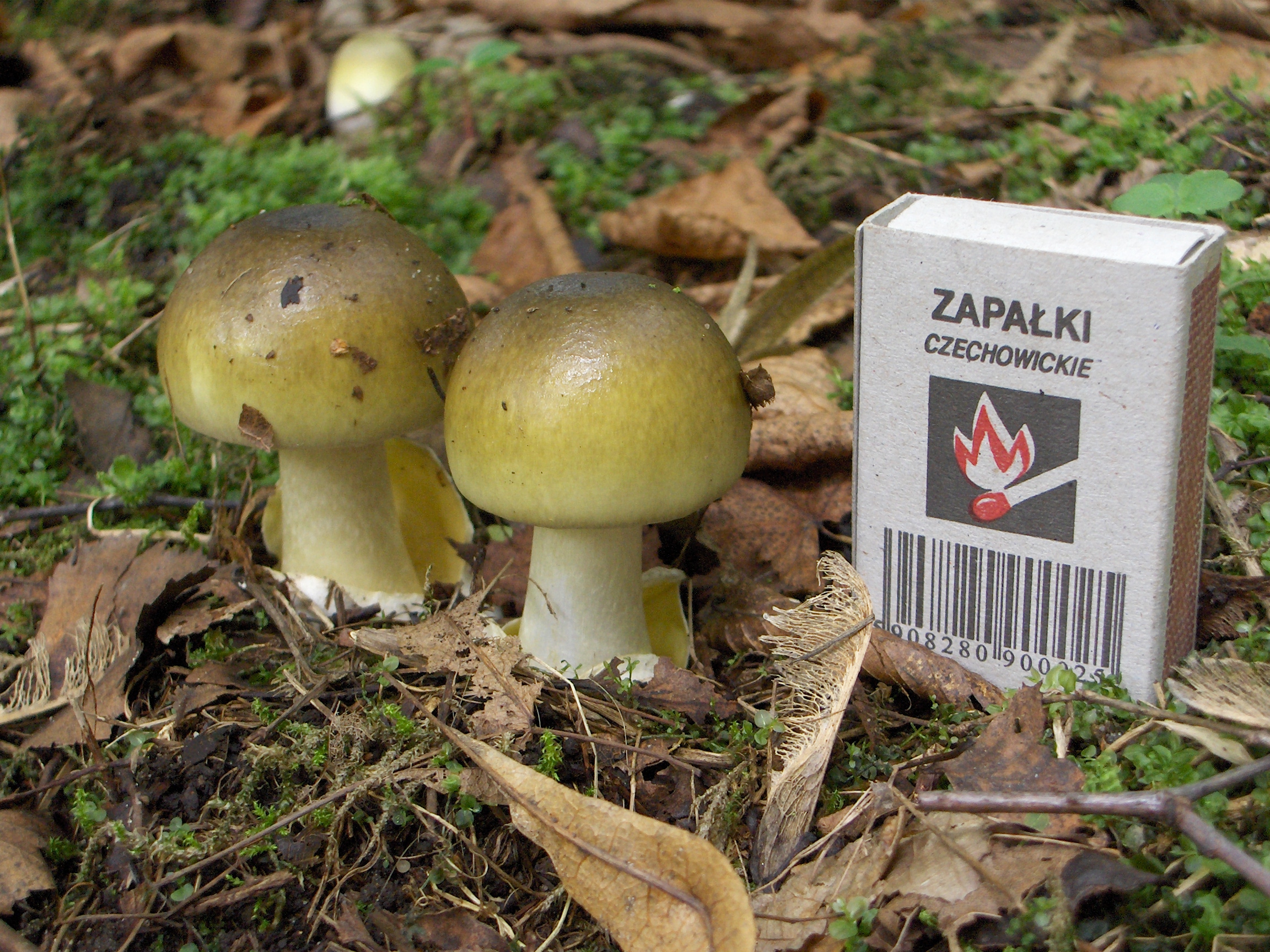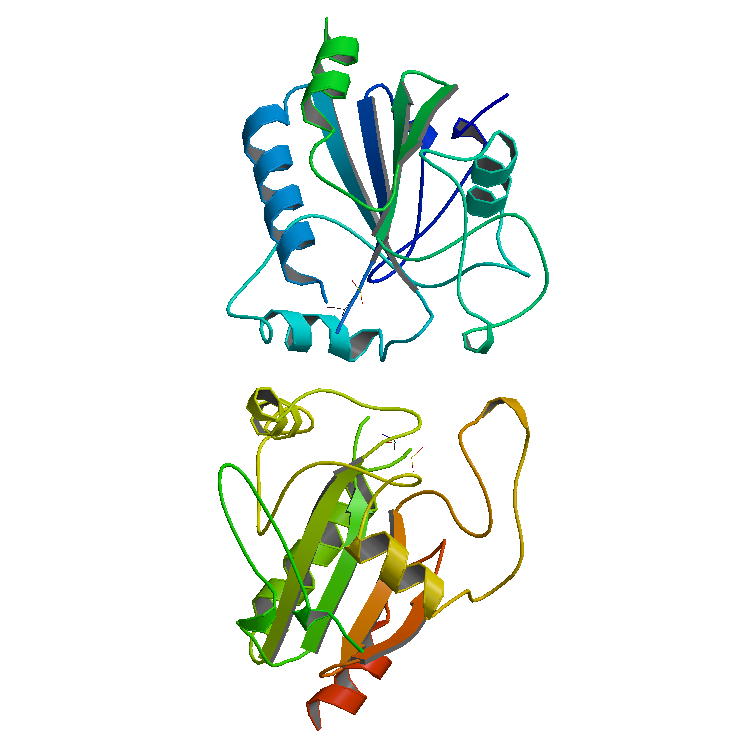|
Amavadin
Amavadin is a vanadium-containing anion found in three species of poisonous ''Amanita'' mushrooms: ''A. muscaria'', ''A. regalis'', and ''A. velatipes''. Amavadin was first isolated and identified in 1972 by Kneifel and Bayer. This anion, which appears as a blue solution, is an eight-coordinate vanadium complex. A Ca2+ cation is often used to crystallize amavadin to obtain a good quality X-ray diffraction. Oxidized amavadin can be isolated as its PPh4+ salt. The oxidized form contains vanadium(V), which can be used to obtain an NMR spectrum. Preparation The formation of amavadin begins with the formation of two tetradentate ligands. :2 HON(CH(CH3)CO2H)2 + VO2+ → 2sup>2− + H2O + 4 H+ Structure and properties The ligand found in amavadin was first synthesized in 1954. Amavadin contains vanadium(IV). Initially, amavadin was thought to have a vanadyl, VO2+, center. In 1993, it was discovered by crystallographic characterization that amavadin is not a vanadyl ion comp ... [...More Info...] [...Related Items...] OR: [Wikipedia] [Google] [Baidu] |
Vanadium
Vanadium is a chemical element; it has Symbol (chemistry), symbol V and atomic number 23. It is a hard, silvery-grey, malleable transition metal. The elemental metal is rarely found in nature, but once isolated artificially, the formation of an oxide layer (passivation (chemistry), passivation) somewhat stabilizes the free metal against further oxidation. Spain, Spanish-Mexico, Mexican scientist Andrés Manuel del Río discovered compounds of vanadium in 1801 by analyzing a new lead-bearing mineral he called "brown lead". Though he initially presumed its qualities were due to the presence of a new element, he was later erroneously convinced by French chemist Hippolyte Victor Collet-Descotils that the element was just chromium. Then in 1830, Nils Gabriel Sefström generated chlorides of vanadium, thus proving there was a new element, and named it "vanadium" after the Scandinavian goddess of beauty and fertility, Vanadís (Freyja). The name was based on the wide range of colors fo ... [...More Info...] [...Related Items...] OR: [Wikipedia] [Google] [Baidu] |
Amanita Muscaria
''Amanita muscaria'', commonly known as the fly agaric or fly amanita, is a basidiomycete fungus of the genus ''Amanita''. It is a large white-lamella (mycology), gilled, white-spotted mushroom typically featuring a bright red cap covered with distinctive white warts. It is one of the most recognizable fungi in the world. ''A.muscaria'' exhibits complex genetic diversity that suggests it is a species complex rather than a single species. It is a widely distributed mushroom native to temperate and boreal forests of the Northern Hemisphere, now also naturalized in the Southern Hemisphere, forming symbiotic relationships with various trees and spreading invasively in some regions. Its name derives from its traditional use as an insecticide. It can cause poisoning, especially in children and those seeking its hallucinogenic effects, due to psychoactive compounds like muscimol and the ibotenic acid; however, fatal poisonings are extremely rare. Boiling it reduces toxicity by removi ... [...More Info...] [...Related Items...] OR: [Wikipedia] [Google] [Baidu] |
Vanadium(V) Compounds
Vanadium is a chemical element; it has symbol V and atomic number 23. It is a hard, silvery-grey, malleable transition metal. The elemental metal is rarely found in nature, but once isolated artificially, the formation of an oxide layer ( passivation) somewhat stabilizes the free metal against further oxidation. Spanish- Mexican scientist Andrés Manuel del Río discovered compounds of vanadium in 1801 by analyzing a new lead-bearing mineral he called "brown lead". Though he initially presumed its qualities were due to the presence of a new element, he was later erroneously convinced by French chemist Hippolyte Victor Collet-Descotils that the element was just chromium. Then in 1830, Nils Gabriel Sefström generated chlorides of vanadium, thus proving there was a new element, and named it "vanadium" after the Scandinavian goddess of beauty and fertility, Vanadís (Freyja). The name was based on the wide range of colors found in vanadium compounds. Del Río's lead mineral was ul ... [...More Info...] [...Related Items...] OR: [Wikipedia] [Google] [Baidu] |
Anion
An ion () is an atom or molecule with a net electrical charge. The charge of an electron is considered to be negative by convention and this charge is equal and opposite to the charge of a proton, which is considered to be positive by convention. The net charge of an ion is not zero because its total number of electrons is unequal to its total number of protons. A cation is a positively charged ion with fewer electrons than protons (e.g. K+ ( potassium ion)) while an anion is a negatively charged ion with more electrons than protons (e.g. Cl− ( chloride ion) and OH− ( hydroxide ion)). Opposite electric charges are pulled towards one another by electrostatic force, so cations and anions attract each other and readily form ionic compounds. Ions consisting of only a single atom are termed ''monatomic ions'', ''atomic ions'' or ''simple ions'', while ions consisting of two or more atoms are termed polyatomic ions or ''molecular ions''. If only a + or − is present, it indi ... [...More Info...] [...Related Items...] OR: [Wikipedia] [Google] [Baidu] |
Amanita
The genus ''Amanita'' contains about 600 species of agarics, including some of the most toxic known mushrooms found worldwide, as well as some well-regarded Edible mushroom, edible species (and many species of unknown edibility). The genus is responsible for approximately 95% of fatalities resulting from mushroom poisoning, with the death cap accounting for about 50% on its own. The most potent toxin present in these mushrooms is . The genus also contains many edible mushrooms, but mycologists discourage mushroom hunters, other than experts, from selecting any of these for human consumption. Nonetheless, in some cultures, the larger local edible species of ''Amanita'' are mainstays of the markets in the local growing season. Samples of this are ''Amanita zambiana'' and other fleshy species in central Africa, ''Amanita basii, A. basii'' and similar species in Mexico, ''Amanita caesarea, A. caesarea'' and the "Blusher" ''Amanita rubescens, A. rubescens'' in Europe, a ... [...More Info...] [...Related Items...] OR: [Wikipedia] [Google] [Baidu] |
Complex (chemistry)
A coordination complex is a chemical compound consisting of a central atom or ion, which is usually metallic and is called the ''coordination centre'', and a surrounding array of bound molecules or ions, that are in turn known as ''ligands'' or complexing agents. Many metal-containing compounds, especially those that include transition metals (elements like titanium that belong to the periodic table's d-block), are coordination complexes. Nomenclature and terminology Coordination complexes are so pervasive that their structures and reactions are described in many ways, sometimes confusingly. The atom within a ligand that is bonded to the central metal atom or ion is called the donor atom. In a typical complex, a metal ion is bonded to several donor atoms, which can be the same or different. A polydentate (multiple bonded) ligand is a molecule or ion that bonds to the central atom through several of the ligand's atoms; ligands with 2, 3, 4 or even 6 bonds to the central a ... [...More Info...] [...Related Items...] OR: [Wikipedia] [Google] [Baidu] |
Amanita Muscaria 3 Vliegenzwammen Op Rij
The genus ''Amanita'' contains about 600 species of agarics, including some of the most toxic known mushrooms found worldwide, as well as some well-regarded edible species (and many species of unknown edibility). The genus is responsible for approximately 95% of fatalities resulting from mushroom poisoning, with the death cap accounting for about 50% on its own. The most potent toxin present in these mushrooms is . The genus also contains many edible mushrooms, but mycologists discourage mushroom hunters, other than experts, from selecting any of these for human consumption. Nonetheless, in some cultures, the larger local edible species of ''Amanita'' are mainstays of the markets in the local growing season. Samples of this are '' Amanita zambiana'' and other fleshy species in central Africa, '' A. basii'' and similar species in Mexico, '' A. caesarea'' and the "Blusher" '' A. rubescens'' in Europe, and '' A. chepangiana'' in Southeast Asia. Other species are ... [...More Info...] [...Related Items...] OR: [Wikipedia] [Google] [Baidu] |
Ligand
In coordination chemistry, a ligand is an ion or molecule with a functional group that binds to a central metal atom to form a coordination complex. The bonding with the metal generally involves formal donation of one or more of the ligand's electron pairs, often through Lewis acids and bases, Lewis bases. The nature of metal–ligand bonding can range from covalent bond, covalent to ionic bond, ionic. Furthermore, the metal–ligand bond order can range from one to three. Ligands are viewed as Lewis bases, although rare cases are known to involve Lewis acids and bases, Lewis acidic "ligands". Metals and metalloids are bound to ligands in almost all circumstances, although gaseous "naked" metal ions can be generated in a high vacuum. Ligands in a complex dictate the reactivity (chemistry), reactivity of the central atom, including ligand substitution rates, the reactivity of the ligands themselves, and redox. Ligand selection requires critical consideration in many practical are ... [...More Info...] [...Related Items...] OR: [Wikipedia] [Google] [Baidu] |
Vanadyl Ion
The vanadyl or oxovanadium(IV) cation, VO2+, is a functional group that is common in the coordination chemistry of vanadium. Complexes containing this functional group are characteristically blue and paramagnetic. A triple bond is proposed to exist between the V4+ and O2− centers. The description of the bonding in the vanadyl ion was central to the development of modern ligand-field theory. Natural occurrence Minerals Cavansite and pentagonite are vanadyl-containing minerals. Water VO2+, often in an ionic pairing with sodium (NaH2VO4), is the second most abundant transition metal in seawater, with its concentration only being exceeded by molybdenum. In the ocean the average concentration is 30 nM. Some mineral water springs also contain the ion in high concentrations. For example, springs near Mount Fuji often contain as much as 54 μg per liter. Vanadyl containing compounds Oxovanadium(IV) * vanadyl acetylacetonate, VO(acac)2 * vanadyl sulfate, VOSO4 * van ... [...More Info...] [...Related Items...] OR: [Wikipedia] [Google] [Baidu] |
Peroxidase
Peroxidases or peroxide reductases ( EC numberbr>1.11.1.x are a large group of enzymes which play a role in various biological processes. They are named after the fact that they commonly break up peroxides, and should not be confused with other enzymes that ''produce'' peroxide, which are often oxidases. Functionality Peroxidases typically catalyze a reaction of the form: :ROOR' + \overset + 2H+ -> ce + R'OH Optimal substrates For many of these enzymes the optimal substrate is hydrogen peroxide, but others are more active with organic hydroperoxides such as lipid peroxides. Peroxidases can contain a heme cofactor in their active sites, or alternately redox-active cysteine or selenocysteine residues. The nature of the electron donor is very dependent on the structure of the enzyme. * For example, horseradish peroxidase can use a variety of organic compounds as electron donors and acceptors. Horseradish peroxidase has an accessible active site, and many compounds can re ... [...More Info...] [...Related Items...] OR: [Wikipedia] [Google] [Baidu] |







